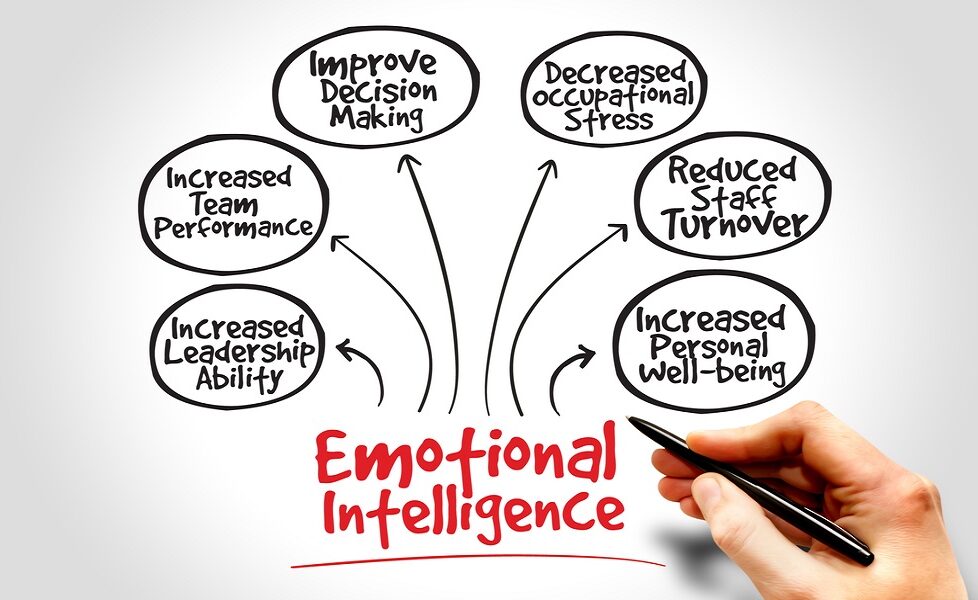Transform Your Performance Management Practice Using Emotional Intelligence


In my years of leadership, I’ve come to understand that the most potent tool in my arsenal isn’t just strategic acumen or technical expertise – it’s emotional intelligence (EI). As a leader, I’ve seen firsthand how EI can transform performance management from a mere administrative task to a transformative experience for both the leader and the employee. Let’s delve into the neuroscience behind this and explore how you can harness EI for optimal performance management.
At its core, emotional intelligence is the ability to recognize, understand, and manage our own emotions while also recognizing, understanding, and influencing the emotions of others. Neuroscientific research has shown that our brain’s limbic system, particularly the amygdala and the prefrontal cortex, play a pivotal role in emotional processing and regulation.
When we react to emotional stimuli, the amygdala is activated. It’s responsible for our ‘fight or flight’ response. However, the prefrontal cortex, the seat of our executive functions, can modulate this response, allowing us to respond rationally and empathetically. This interplay is the foundation of emotional intelligence.
If you are like most organisations, the hierarchy of performance management falls into three broad categories:
People who:
a) Underperform
b) Perform averagely/competently
c) Perform over and above requirements
Several organisations give more focus to under-performance and over-performance. Why? Because unchecked under-performance permeates the rest of the organisation and multiplies as it impacts every team member. Over-performance cries out to be recognised. Often, organisations depend on and excel because of star performers; With a mixture of gratitude and desire to keep performance at that level, reward systems are introduced.
The Employment Practices report by Xperthr shows for nearly 70% of people surveyed, an action for poor performance was taken for less than 5% of employees. Although I don’t particularly subscribe to bell curve comparisons, some latest models advocate average rates of over-performance equate to some 16% of the total workforce. If you add both together, then you are talking about 21% of your employees. If you do the maths, there is a possibility that up to 79% of your employees are average or competent performers.
So yes, the figures are pretty subjective. Still, my guess is unless you are a top performer in your industry, it’s likely that the majority of your people fall under the “average or competent performance” criteria.
As a performance manager, you have distinct functions for each category of a performer. And you need to performance manage all of your people, not just extreme performers. You will be more effective in achieving results if you use emotional intelligence techniques to enhance your management of each category.
Neuroscience Insight: The brain perceives criticism or negative feedback as a threat, activating the amygdala. As leaders, our role is to ensure that our feedback doesn’t trigger a defensive response.
You aim to either get your employee to perform to standard or to leave the organisation. Whilst being very clear about your expectations in performing to standard; to avoid conflict and be effective, you need to be able to display at least two emotional skills:
Neuroscience Insight: The brain’s neuroplasticity means that with the right stimuli, anyone can learn, adapt, and grow. Our role as leaders is to provide that stimulus.
Managing is a stressful business, and you have many tasks and issues to deal with; many decisions to make, and planning to be done; well, you don’t need me to tell you how busy it is. The problem is, that the majority of your people who won’t cause you problems and get the work done are working in their comfort zone, and it’s hard to find the time to raise the bar for them.
Your main task for this category is to use their talent, time and goodwill to drive performance. You can do this in several ways, but setting stretching objectives designed to drive up pockets of performance across the board is the key. The EI skills needed to do this are:
Neuroscience Insight: High performers often have a heightened sense of self-awareness and self-regulation, hallmarks of emotional intelligence. As leaders, our role is to support and channel this EI effectively.
I don’t know about you, but I have often nearly been on my knees with gratitude when self-starters have driven through tricky situations or taken the initiative and made my life easier, gotten great results and done a great job. Given a choice, wouldn’t we all like to have these people in our midst? But while you need to hold the vibe of gratitude, you need to remember your function for these people, and in this situation, it is two-fold.
You need to reward outstanding performance and help these great performers get where they need to be. Hopefully, that will be in a career in your company, but if it isn’t, you still need to help them. To achieve this effectively, there are two attitudes you must hold, and it takes some emotional maturity to complete:
In conclusion, as leaders, our understanding of emotional intelligence, backed by insights from neuroscience, can profoundly impact our approach to performance management. By recognizing the deep-seated neural pathways that drive our emotions and reactions, we can cultivate a leadership style that is empathetic, effective, and transformative.
I help leaders develop self- mastery, helping them to become confident in their own inner guidance.
I collaborate with leadership experts, managers and HR professionals to help them get their own message and unique services and products to a wide audience.
